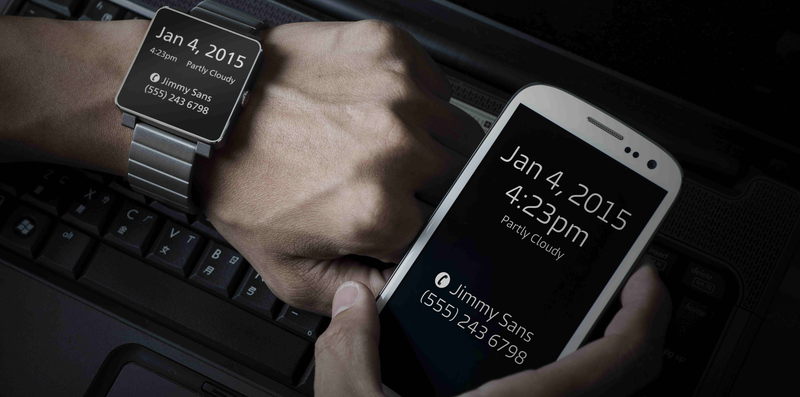Wearables: It’s the text on the screen, as much as the device, which needs to be beautiful

Picture credit: Monotype
Wearable device manufacturers are proliferating at almost the same rate as wearable devices themselves. One look at the Consumer Electronics Show (CES) in January, or Mobile World Congress (MWC) in March, with their dedicated wearables rooms, made that plain to see.
With so much competition in the market, on platforms with limited memory, runtime and computing power, gaining an edge is key for OEMs. Increasingly, wearable devices have to both look and run good. That’s where Monotype, a more than 125 year old company, senses an opportunity.
The firm released Monotype Spark at CES in January, a solution specifically designed to help product manufacturers create high quality, scalable type in low-memory computing devices. The concept was simple: what if you could get iPhone quality text rendering on your wearable device? It was an interesting decision to debut at the leading consumer technology show, given the product’s squarely aimed at OEMs and developers, yet Monotype arrived armed with demos on 50 MHz boards. Geoff Greve, VP type operations at Monotype, explains: “They said it can’t be done, and then we show them that board. I swear, they were pulling people out of meetings.”
The key target in Monotype’s battle to make text more beautiful than current bitmap only is interfaces. As bitmaps are the fastest thing that renders on a screen, albeit more unwieldy, building a scalable solution which crawls on the page, with the user seeing the pixels forming, simply won’t do. As a consequence, the code had to be lean – less than 100 kilobytes with high performance. Greve states when Monotype Spark launched, it was at 96kb. Currently, it stands at just over 80kb.
There’s plenty of research behind the product as well. Papers from 2012 and 2014, in association with MIT AgeLab, found a humanist sans serif, such as the Frutiger typeface, could be read accurately in a shorter time frame than a square grotesque sans serif, such as Eurostile. Why is this important? For wearable devices, and displays in cars, time is naturally of the essence. It’s not so much about immersive reading, as on most LCD displays, but quick glance.
According to Greve, the researchers at MIT said if Monotype could increase reading speed by 2%, then it would be worthwhile. In the event, the best numbers turned out at over 10%. If you’re in a car, that means up to 50 feet you’re saving looking at the road rather than reading off a screen. Key to the success of the humanist fonts, as opposed to grotesque, includes fewer letterforms that can be confused with one another – the lower case ‘c’ and ‘o’ look similar at speed on grotesque fonts – and less crowded characters.
As Greve notes, it’s straightforward to make a single display look beautiful, but meeting with many OEMs, their requirements aren’t as simple as that. Many customers have products from the low end up to the high end, with hardware, screen size and resolution all different. Not all LCD screens render the same either; they have different resolutions, different pixel configurations. “The cool thing about our solution is that it’s flexible, and I can adjust it for different screens to maximise the quality,” he explains.
It’s an important area for the whole industry; as IEEE recently wrote on these pages; the likes of Tag Heuer, Swarovski, Ralph Lauren and Gucci entering the game is “a good indication that the industry is finally cluing into one of the most important truths of wearables: getting consumers to buy means designing something that they’d actually want to be seen wearing.”
As far as Monotype is concerned, what that device is displaying is just as important as the device itself.
 Interested in hearing industry leaders discuss subjects like this and sharing their use-cases? Attend the co-located IoT Tech Expo, Blockchain Expo, AI & Big Data Expo and Cyber Security & Cloud Expo World Series with upcoming events in Silicon Valley, London and Amsterdam and explore the future of enterprise technology.
Interested in hearing industry leaders discuss subjects like this and sharing their use-cases? Attend the co-located IoT Tech Expo, Blockchain Expo, AI & Big Data Expo and Cyber Security & Cloud Expo World Series with upcoming events in Silicon Valley, London and Amsterdam and explore the future of enterprise technology.

Leave a comment
Alternatively
This will only be used to quickly provide signup information and will not allow us to post to your account or appear on your timeline.